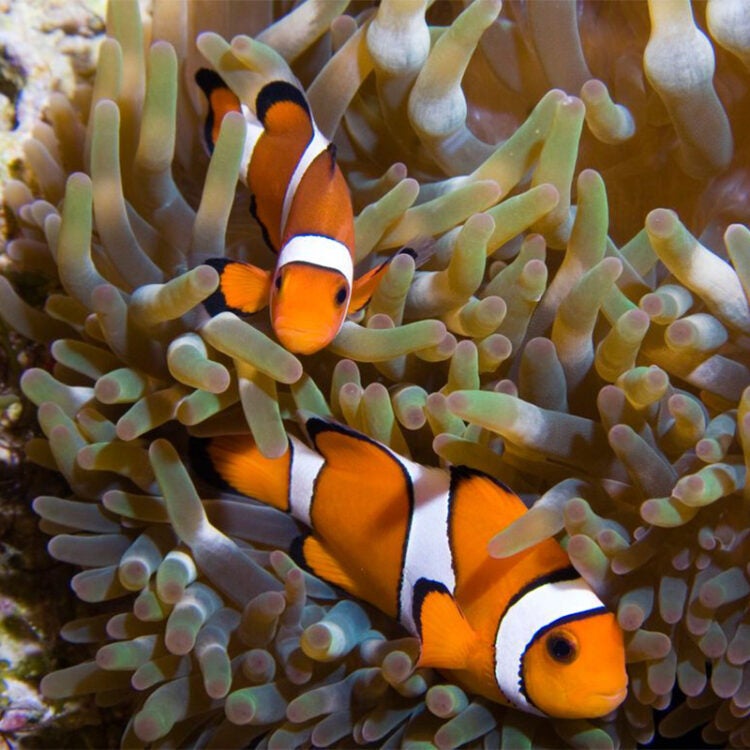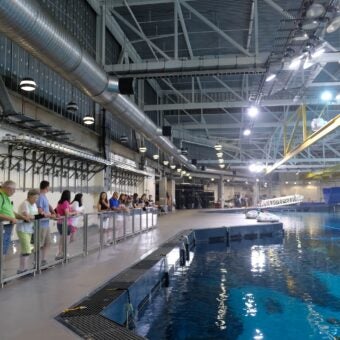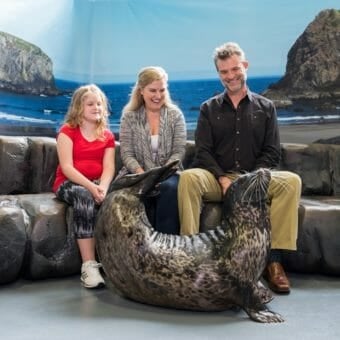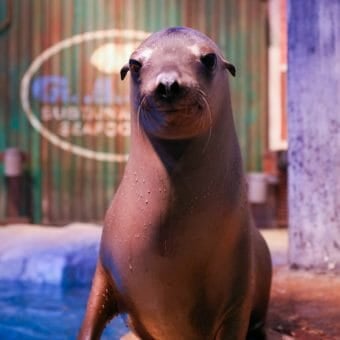-
Size
3 inches (7.6 cm) -
Diet
Zooplankton -
Range
Western Pacific -
Habitat
Sea anemones in shallow, coastal waters
Physical Characteristics
- Its body is bright orange with three vertical white bars: one located just behind the eye, a middle bar characterized by a forward bulge that projects toward the head, and a posterior bar near the caudal fin. Each bar is edged in black, as are the fins.
- Grows to a maximum length of about 3 inches (7.6 cm).
- Female is larger than male.
Animal Fact
Symbiosis, or “living together,” is a primary behavior of the clownfish. Clownfish use sea anemones for shelter and protection from predators.
Diet / Feeding
- Diet consists of zooplankton: tiny bottom-dwelling invertebrates and algae from its surrounding coral heads.
- Can also feed on leftover portions of its host anemone’s meals, as well as clean the anemone of parasites and dead skin.
Range / Habitat
- Occurs in tropical seas in most of the Western Pacific.
- Found on rocky bottoms or coral reefs.
- Always seen swimming in or near its host sea anemone in shallow, coastal waters usually less than 39 feet (12 m) in depth.
- Territorial, lives in a symbiotic relationship with its sea anemone (Often Heteractis magnifica, Stichodactyla gigantea, S. mertensii).
Reproduction & Growth
- Create monogamous pairs and live together in a small area around their host anemone.
- Breeding and spawning occur year-round due to the warm tropical seas that this species inhabits.
- Shortly before spawning, the male undergoes several behavioral changes such as fin erecting, chasing, nest-making, and “signal jumping,” a trait used to describe the up-and-down swimming motions of the aggressive male.
- The male clears algae and debris from an area close to the shelter of the stinging sea anemone tentacles and the female deposits between 100 to 1000 eggs, which are then externally fertilized by the male.
- After the 0.12 to 0.16 inch (3 – 4 mm) transparent eggs are laid, the male takes close watch, guarding against predators and continuously fanning the nest to oxygenate the eggs. Meanwhile, the female continues feeding and increasing her size in comparison to the smaller dominant male.
- After 6 to 7 days, the eggs hatch and eventually settle on the bottom where the young undergo juvenile development, including the formation of their protective mucus coat, which will keep them safe from the tentacles of their future host anemone.
Conservation Status
- “Least Concern” on the IUCN Red List.
Additional Information
- Symbiosis, or “living together,” is the primary behavioral characteristic of this type of fish. Clownfish use sea anemones for shelter and protection from predators.
- The juvenile keeps its dorsal (top) fins tilting toward the light source, which is a behavior used for swimming orientation. When an artificial light source is moved to the side of the aquarium, the juvenile will “stand on its head” to keep its dorsal fin in line with the light source.
- A popular aquarium fish and easy to keep, but its anemone host can be difficult to maintain. Keeping clownfish without an anemone is acceptable.
- A sea anemone’s tentacles secrete a chemical that allows its appendages to touch freely as they sway with the ocean current, without triggering the stinging mechanisms. These nematocysts, or stinging cells, make the anemone’s tentacles deadly to passing fish. The clownfish is “immune” to the stinging cells of the anemone and lives among the tentacles, which produces a sting that would stun and kill other non-adapted fish.
- Anemones can live without clownfish: they have been found in reefs without a co-habitant symbiotic partner. However, the clownfish relies on the anemone for survival and has not been found in the wild without a host. In exchange, the clownfish preen the tentacles, cleaning them of debris and waste material to keep the anemone healthy. This type of symbiosis is called mutualism.
- Association with anemones provides the clownfish with protection from predators, such as wrasses, damselfish, and brittle stars, and a safe place to lay eggs. Predators of clownfish eggs are not able to get past the anemone’s stinging tentacles.
- Every clown anemonefish begins life as a male. Females develop from males via sex reversal, a process called “protandry.” This sex reversal is triggered by the nature of social interactions of a clownfish community, which is usually made up of two to six fish living in one host anemone. The female mates with the largest, dominant male and, consequently, the non-breeder males form a hierarchy based on size. If the female dies, the largest male changes sex and the next largest male of the non-breeders becomes the new dominant male and then breeds with the new female. The subordinate, smaller male fish move up the fish hierarchy in this manner.
- The larger the male fish, the more aggressive and territorial it is to the smaller males. Therefore, the adult male stunts the growth of juveniles by continuously chasing them and making them expend energy on competitive survival rather than feeding. This is unlike the lone female, who does not expend energy on aggressive behavior and instead feeds and grows larger.
- This species is also called the “orange anemonefish.”
Sources
- animaldiversity.ummz.umich.edu
- Encyclopedia of Fishes, 2nd Edition. pgs. 19, 41, 207, 208
- Field Guide to Anemonefishes. Fautin, D. G. and Allen, G. R., pgs. 98-99
- Clownfishes. Wilkerson, J. D., pg. 68
- www.fishbase.org





